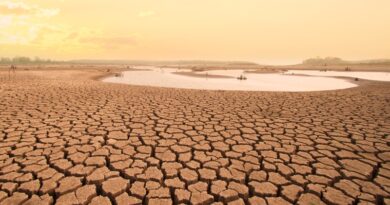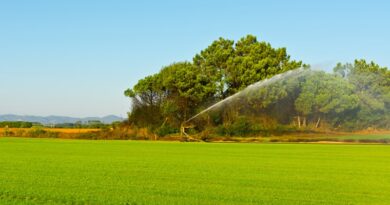New online tool allows mapping of floods to street level; to aid in disaster planning

A new online tool that allows mapping of floods down to the street level has been developed, with the experts behind it hoping that it will help plan urban and agricultural development, effective flood defences, disaster readiness and in identifying supply chain vulnerabilities.
The tool lets users adjust variables to help locate gaps in flood defences and responses, and to plan future development of all kinds, for instance, where to build or upgrade infrastructure, or develop agriculture. Experts believe the tool will be particularly useful in aiding disaster planning, especially in the Global South.
Created by the UN University’s Institute for Water, Environment and Health in Hamilton, Canada, with support from Google, MapBox and other partners, the tool generates instant, accurate street-level resolution maps of floods worldwide since 1985. The free online World Flood Mapping Tool will help all countries but especially those in the Global South, where flood risk maps are rare and often badly out of date.
The online tool helps create flood maps at 30-meter resolution — street by street level. An upcoming version for more commercial uses, for example by insurance firms, will offer even more precise building-level resolution, said an official statement.
“Floods in the past decade have impacted the lives of more than half a billion people, mainly in low and middle income countries, and resulted in damages of nearly $500 billion — roughly equal to the GDP of Singapore. More recent floods worldwide have added to a fast growing toll of upended lives, damage and deaths”, said UNU-INWEH Director Dr Vladimir Smakhtin.
“An estimated 1.5 billion people — greater than the population of Europe — live at risk of exposure to intense flooding. We need to prepare now for more intense and more frequent floods due to climate change and hope this tool will help developing nations in particular to see and mitigate the risks more clearly”, he added.
Hamid Mehmood, a GIS and remote sensing specialist at UNU-INWEH who led the tool’s development, says that a UNU-INWEH survey showed a majority of flood forecasting centers in flood-prone countries lack the ability to run complex flood forecasting models.
He adds that floods like those this year in Europe that killed more than 200 people and caused billions of dollars in damages are now up to nine times more likely because of climate change.
“As temperatures continue to rise the number of flood events will increase along with their severity,” Mehmood said. “No place is immune. And yet remarkably few regions, even in wealthy countries, have useful, up-to-date flood maps because of the cost and difficulty of creating them.”
The World Flood Mapping Tool uses the Google Earth Engine combined with decades of Landsat data since 1985 — a vast catalog of geospatial data enabling planet-scale analysis capabilities.
Layers of Landsat information for a selected region and specified timeframe identifies temporary and permanent water bodies while integrating site-specific elevation and land-use data.
This produces a detailed map of flood inundation in recent decades, with available overlays of population, buildings and land use, which can be used for community planning, building zoning, insurance assessments and more.
To validate the technology, maps generated in less than a minute using the new tool were compared to documented flooding events in Australia, Bangladesh, Canada, Cambodia, India, Mozambique, Sri Lanka and Thailand, with 82 per cent accuracy achieved.
The new tool will also reflect new floods soon after they occur to provide the most up-to-date maps to help assess overall flood impacts and plan for the future.
“Painting a detailed picture of the historical and potential flood risk areas will be invaluable for any urban and regional planning department,” says project collaborator Dr Duminda Perera of UNU-INWEH.
The more detailed version of the tool in development for commercial use will provide resolution at a building-by-building level and incorporate building occupancy data.
Natural disaster-related insurance rates (where such insurance exists for homes and livelihoods impacted by flooding), flood-related human and economic losses, etc, can be estimated using the new tool, said Dr Mehmood.
Potential supply chain vulnerabilities can be revealed. And during disasters, the tool can be used to help determine emergency relief routes.
The World Flood Mapping Tool could also potentially guide development of agriculture insurance support for persons living and farming at the subsistence level. Creating this safety net would have far-reaching implications for global development goals and promoting more secure economies and nations, the statement added.



